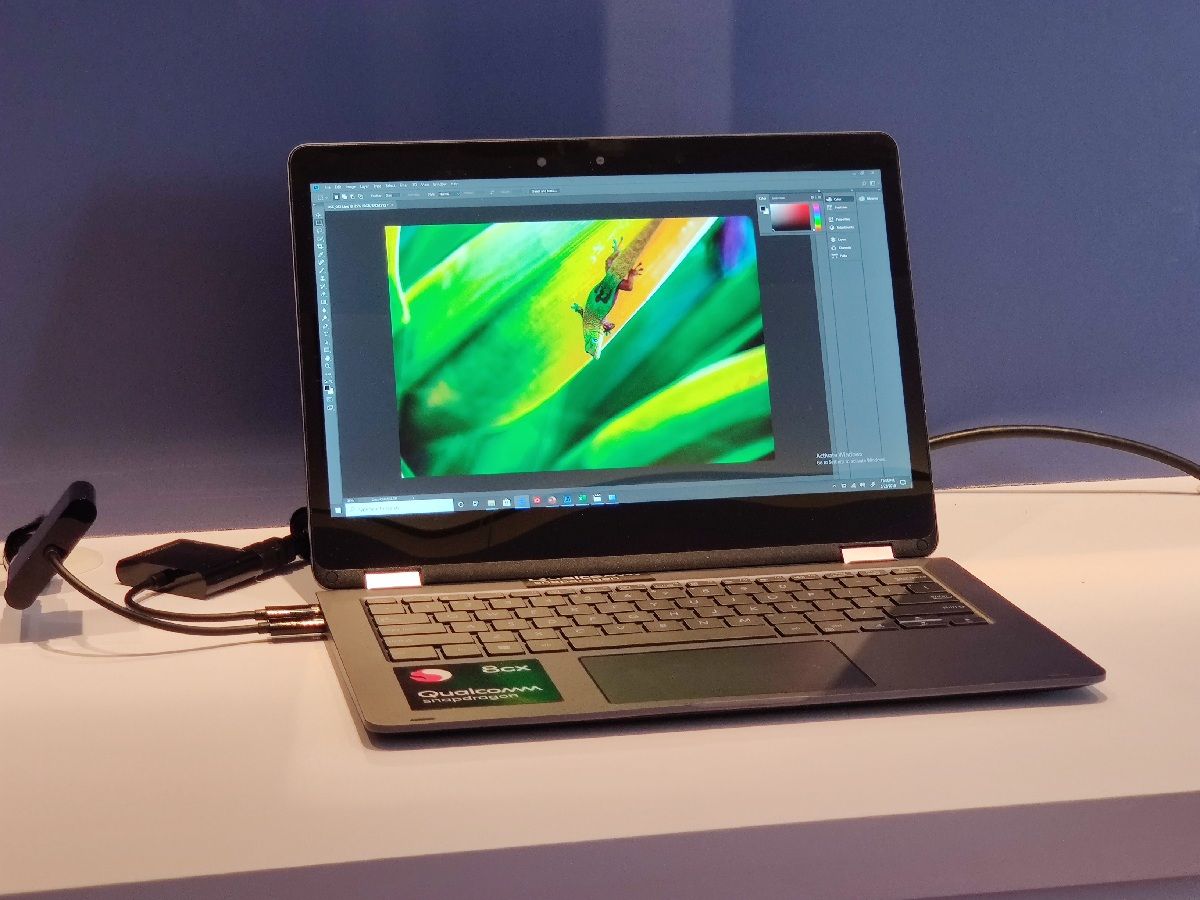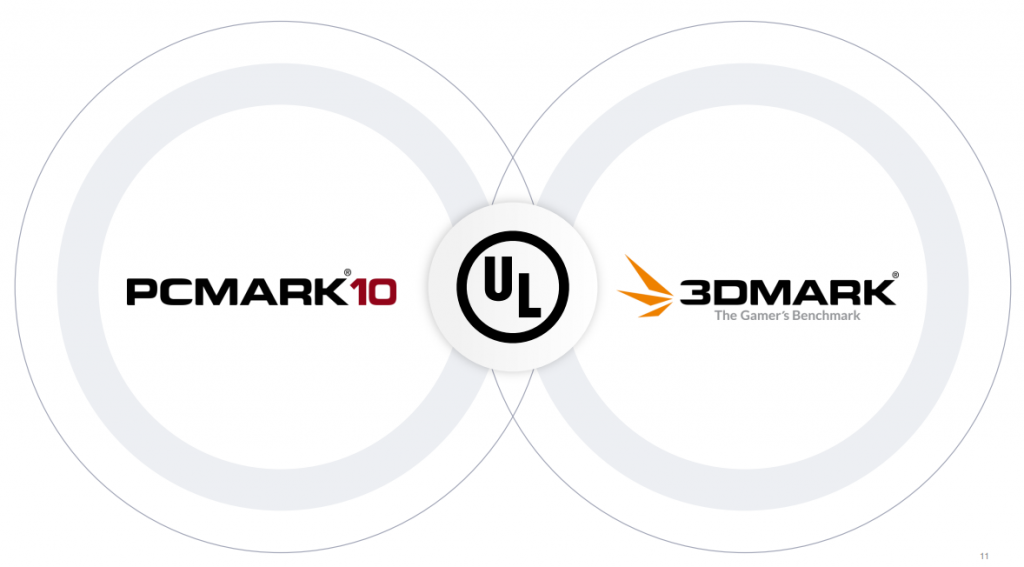At the Snapdragon Tech Summit back in December, Qualcomm announced the Snapdragon 8cx, the company's premium mobile platform for the next generation of "Always On, Always Connected" PCs. Nearly 6 months later at Computex in Taipei, Qualcomm is finally ready to share the first battery life and performance metrics for the new mobile platform. The Snapdragon 8cx boasts impressive battery life and performance numbers in a new set of PCMark benchmarks for Windows 10. Here's what to expect when the first "Always On, Always Connected PCs" with Qualcomm's latest SoC launch early next year.
New PCMark10 Application and Battery Life Profile Tests
When marketing a new laptop, companies often post battery life metrics that are hard to believe or under such specific circumstances that they're meaningless for the average consumer. A growing trend is to use application-based benchmarks to estimate the battery life and performance when performing real-world tasks like browsing the web, editing documents, or watching videos. Dell, for example, uses an application-based benchmark called MobileMark 2014 to produce its claim that the XPS 13 with an Intel Core i5 8265U, 8GB RAM, 256GB SSD, and FHD display lasts up to 21 hours.
Similarly, Qualcomm has enlisted the aid of PCMark, an industry-leading benchmark developed by UL, formerly known as Futuremark, to show off the real-world application performance and battery longevity of a laptop powered by the Snapdragon 8cx. The new benchmarks are called the PCMark10 Application test and PCMark10 Battery Life Profile test. According to Jani Joki, Director of Engineering at UL, the tests work as follows:
-
PCMark10 Application Test
- There's no simulated workload here, the Application test ranks machines on their speed handling real-world tasks in Microsoft PowerPoint, Microsoft Word, Microsoft Excel, and Edge.
-
PCMark10 Battery Life Profile test
-
The Battery Life test has machines undergo 3 different tests.
- Application battery life: In this profile, PCMark10 tests the real-world battery life with the same workload as the regular Application Test. Tests last for 10 minutes, though the faster a machine finishes the test the longer it'll have time to idle and the higher its score will be. Thus, performance is valued in this test.
- Video playback: An h.264-encoded FHD video clip is played to simulate "Netflix high-quality" videos.
- Idle: The screen is left on while the machine idles.
- It should be noted that although the benchmark makes no changes to the Windows scheduler or performance profiles, the benchmark does require the user to calibrate the brightness and toggle radios on their own if they so choose.
-
The Battery Life test has machines undergo 3 different tests.
PCMark10 Applications and Battery life profile benchmarks, and 3DMark Night Raid benchmark. Source: UL.
If you're interested in the technical details about how these benchmarks work, you can read the full documentation here.
UL's new Application and Battery Life Profile tests were put to the test on two laptops running version 2.0.2091 of PCMark10 and version 1904 of Microsoft Office, and with the following hardware specifications:
-
Unnamed competitor laptop.
- Intel Core i5-8250U
- 8GB RAM
- 256GB NVMe Storage
- 2K resolution display (2048x1080)
- 49Whr battery
- Windows 10 OS version: 1809
-
Qualcomm Snapdragon 8cx reference laptop.
- Qualcomm Snapdragon 8cx
- 8GB RAM
- 256GB NVMe storage
- FHD resolution display (1920x1080)
- 49Whr battery
- Windows 10 OS version: 1903
Lastly, UL also subjected both laptops to its "Night Raid" benchmark in 3DMark. Night Raid is a fairly new graphics benchmark using the DirectX 12 3D graphics API, and it's designed to test the performance of PCs with integrated GPUs. Both laptops were running version 2.8.6526 of 3DMark.
Before we look at any of the numbers, there are a few things we have to consider. First, the Snapdragon 8cx laptop is fanless, so its ability to maintain its peak performance over time without throttling is impressive. Second, the Microsoft Office apps used by the benchmark were built for the x86 architecture, so they're running via emulation on the ARM-based Snapdragon 8cx laptop. Emulating x86 apps on Windows 10 on ARM is a stopgap measure until developers recompile their apps for ARM. Regardless, the Snapdragon 8cx laptop performs incredibly well in UL's new benchmarks.
Application Performance and Graphics Test
The above images were taken during a benchmarking workshop for the Snapdragon 8cx. The benchmarks were performed by UL on site. The overall Applications score of 4275, composed of the 3728 Word score, 3920 Excel score, 4395 PowerPoint score, and 5204 Edge score, is actually higher than the scores in the reference range that Qualcomm provided (see below.) Similarly, the Night Raid score of 5836 is higher than expected. The overall score is composed of the 6250 graphics score from the mean 25.23FPS in test 1 and 37.02FPS in test 2 and the 4246 CPU score from the 135.4ms mean compute time in the CPU test. UL didn't test the battery life on site, but the reference values show promising results across the board. We'll have to test the battery life for ourselves, but there's little doubt that the Snapdragon 8cx will provide better battery life than an equivalent Intel processor.
Reference benchmark numbers provided by Qualcomm. Source: Qualcomm.
The battery life advantage given by Qualcomm's processors was never in question, though. The underwhelming performance of earlier Snapdragon-powered "Always On, Always Connected" PCs led to many publications rating them poorly, but the Snapdragon 8cx seems to be a powerhouse. Here's a YouTube playlist made by Qualcomm showing off the performance of the Snapdragon 8cx. The playlist was updated today with a video that shows the device handling multitasking like a champ even with two external monitors attached. Other videos show the laptop performing web browsing, running Microsoft Excel, running Microsoft Outlook, running Microsoft Paint 3D, running Adobe Photoshop, and compressing files.
Qualcomm Snapdragon 8cx Specifications and Features
Multitasking in Windows 10 on a laptop powered by the Qualcomm Snapdragon 8cx.
If you're interested in learning about how the new mobile platform compares with its predecessor, here's a chart comparing the basic specifications.
Snapdragon 8cx specifications at-a-glance versus the Snapdragon 850
|
Qualcomm Snapdragon 8cx |
Qualcomm Snapdragon 850 |
|
|
CPU |
CPU Cores: 4+4 Qualcomm Kryo 495 (Cortex-A76 @ 2.75GHz + Cortex-A55) |
CPU Cores: 4+4 Qualcomm Kryo 385 (Cortex-A75 + Cortex-A55) |
|
GPU |
Qualcomm Adreno 6802x performance improvement and 60% greater power efficiency* |
Qualcomm Adreno 630 |
|
Memory and Storage |
Memory Speed: 2133MHzMemory Type: LPDDR4x, 8 Channels, up to 16GBStorage: NVME SSD; UFS3.0 |
Memory speed: 1866MHzMemory Type: 4x16bit, LPDDR4xUFS: UFS2.1 Gear3 2L, up to 8GBSD: SD 3.0 (UHS-I) |
|
ISP |
Dual 14-bit ISPs, Qualcomm Spectra™ 390 image signal processorDual 16 MPix cameras at 30fps ZSLSingle 32 MPix camera at 30fps ZSL |
Dual 14-bit ISPs, Qualcomm Spectra™ 280 image signal processorDual 16 MPix cameras at 30fps ZSLSingle 32 MPix camera at 30fps ZSL |
|
Modem |
Snapdragon X24 LTE, optional Snapdragon X55 multimode modem2000Mbps DL (Cat. 20), 316Mbps UL (Cat 20) |
Snapdragon X20 LTE1200Mbps DL (Cat. 18), 150Mbps UL (Cat 13) |
|
Manufacturing Process |
7nm FinFET |
10nm LPP FinFet |
*Based on figures provided by Qualcomm at the respective time of release.
Full Specifications and Feature List
Lastly, here's the full spec sheet. For more details, check out our coverage of the announcement.
Disclaimer: Qualcomm sponsored my travel to its benchmarking workshop and press conference in Taipei.


